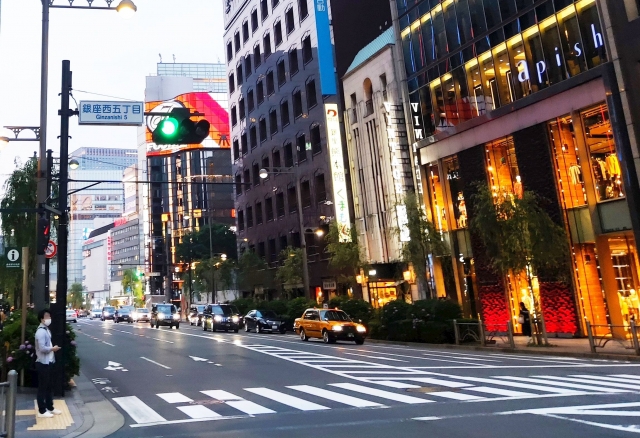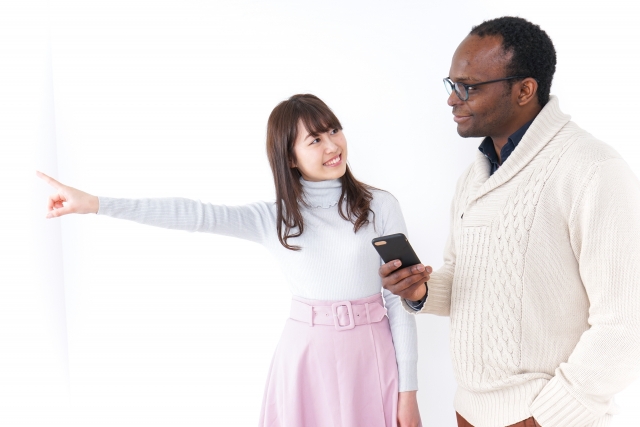It is not true that colors are different in different countries, but there are differences in the words used to describe colors.
When visiting Japan, it is GOOD to learn common everyday words such as “Arigato (thank you),” “Sumimasen (excuse me),” and “Ohayo gozaimasu (good morning),” but it can be surprisingly useful to learn words for colors.
In addition, there are actually cases in Japan where the colors you actually see and the colors you express are used in different ways.
If you don’t know that, you may be confused as to “why?” you may be confused.
In this article, I would like to explain how to say and use Japanese words to describe colors.

Click here to learn Japanese language with the best one-on-one Japanese tutoring lessons in person or online.
Contents
How to say and use Japanese words for colors
Let me list the Japanese ways of saying and using colors that are commonly used in daily life.
It is difficult to remember them all at once, but let’s take it one at a time.
red = 赤 (aka)
The word “red” is used for “aka” (red).
The adjective can be expressed by adding “i (i)”.
- Red flower 赤い花
- Red car 赤い車
- Red umbrella 赤い傘
In this way, adding “i” makes it an adjective.
Also, by adding “i” behind the word “color” (iro), such as “This flower has a beautiful red color, doesn’t it? By adding the word “color” (iro) at the end, the color can be conveyed in an easy-to-understand way, as in “This flower is beautiful red.
And if only the color is vivid, it can be expressed by putting it in front of the color, as in “bright red (makka).
blue = 青 (ao)
The word “blue” is used for “ao” (blue).
Like red, it can be expressed as “blue” by adding “i”, or as “aoiro” by adding the color behind.
When the color is only bright blue, it is expressed as “bright blue (masao).
yellow = 黄色 (kiiro)
The word “yellow” is used for the word “kiiro” (yellow).
It is sometimes expressed as “yellow” with “い” added, but what makes it different from red and blue is that it is expressed as “yellow (kiiro)” from the beginning when it is used.
In some cases, the word “yellow (ki)” is used without adding “color,” but in most cases, “yellow” and “color” are added.
When only yellow is shown, it is expressed as “bright yellow (makkiiro),” but it is used less frequently than “bright red” or “bright blue.

green = 緑(midori)
The word “green” is used for “midori” (green).
However, unlike red, blue, and yellow, “green” is not used as “midorii.
Instead, the word “green” is used alone or with a “color” added, as in “green umbrella” or “green umbrella”.
For foreign nationals, this usage is very complicated.
Also, the word used when only green is reflected is not used as “bright red” or “bright blue,” but as “mamidori” without the small “っ”.
black = 黒(kuro)
The word “black” is used for “kuro” (black).
Like red and blue, it is used in the same way as “kuroi” (black), “kuroiro” (black color), and “makkuro” (pitch black).
white = 白(siro)
The word “white” is used for “white (siro).
In the same way as red and blue, white is used as “siroi”, “siroiroiro”, or “massiro”.
purple = 紫(murasaki)
The word “purple” is used for the word “murasaki”.
As for purple, we do not use the word “purplish” in the same way as green, but use the word “violet” or “murasakiiro”.
Purple is not used in the same way as “bright red” or “bright blue.
brown=茶色(cyairo)
The word “brown” is used to describe the color “cyairo.
Like yellow, it is almost always expressed with a “color” from the beginning, so it is better to remember it as “brown.
When only brown is reflected, it is expressed as “bright brown (maccyairo),” but it is probably used less frequently than “bright red” or “bright blue.
In Japan, “green” is often expressed as “blue.
- Green apples 青りんご
- Lush green grass 青々とした芝生
- Green vegetables 青々した野菜
As you can see, in Japan, green things are often described as “blue,” so foreign nationals must wonder, “Why?” Foreign nationals must wonder “Why?
For example, traffic lights are called “green lights” in English-speaking countries, but in Japan they are called “blue lights” instead of “green lights.
When traffic signals were first installed in Japan around 1930, they were described as “red, blue, and yellow” in newspapers.
As mentioned above, this expression was made possible by the fact that Japanese people tend to express “blue” as “green,” but because of the enormous influence of newspapers at the time, the signals were recognized as blue signals as they were.
However, because of the enormous influence of newspapers at the time, the signal was recognized as a blue signal.
It is important to recognize that “green is sometimes called blue” in Japan.

Conclusion
In this article, we have explained “how to say and use Japanese words for colors.
In daily life, there are surprisingly many opportunities to express colors in words.
There are many more types of colors than those listed here, but it might be a good idea to learn just how to say and use the major colors.
Related article:










